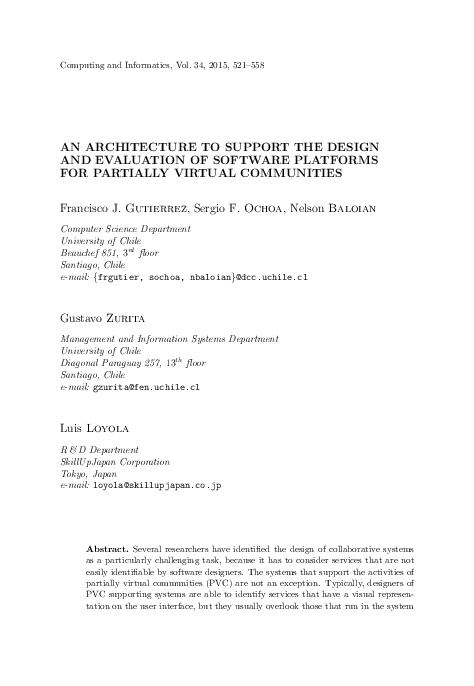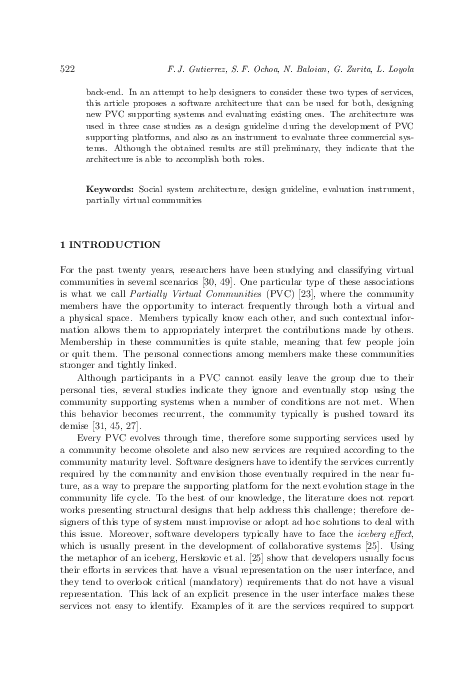An Architecture to Support the Design and Evaluation of Software Platforms for Partially Virtual Communities
keywords: Social system architecture, design guideline, evaluation instrument, partially virtual communities
Several researchers have identified the design of collaborative systems as a particularly challenging task, because it has to consider services that are not easily identifiable by software designers. The systems that support the activities of partially virtual communities (PVC) are not an exception. Typically, designers of PVC supporting systems are able to identify services that have a visual representation on the user interface, but they usually overlook those that run in the system back-end. In an attempt to help designers to consider these two types of services, this article proposes a software architecture that can be used for both, designing new PVC supporting systems and evaluating existing ones. The architecture was used in three case studies as a design guideline during the development of PVC supporting platforms, and also as an instrument to evaluate three commercial systems. Although the obtained results are still preliminary, they indicate that the architecture is able to accomplish both roles.
reference: Vol. 34, 2015, No. 3, pp. 521–558


